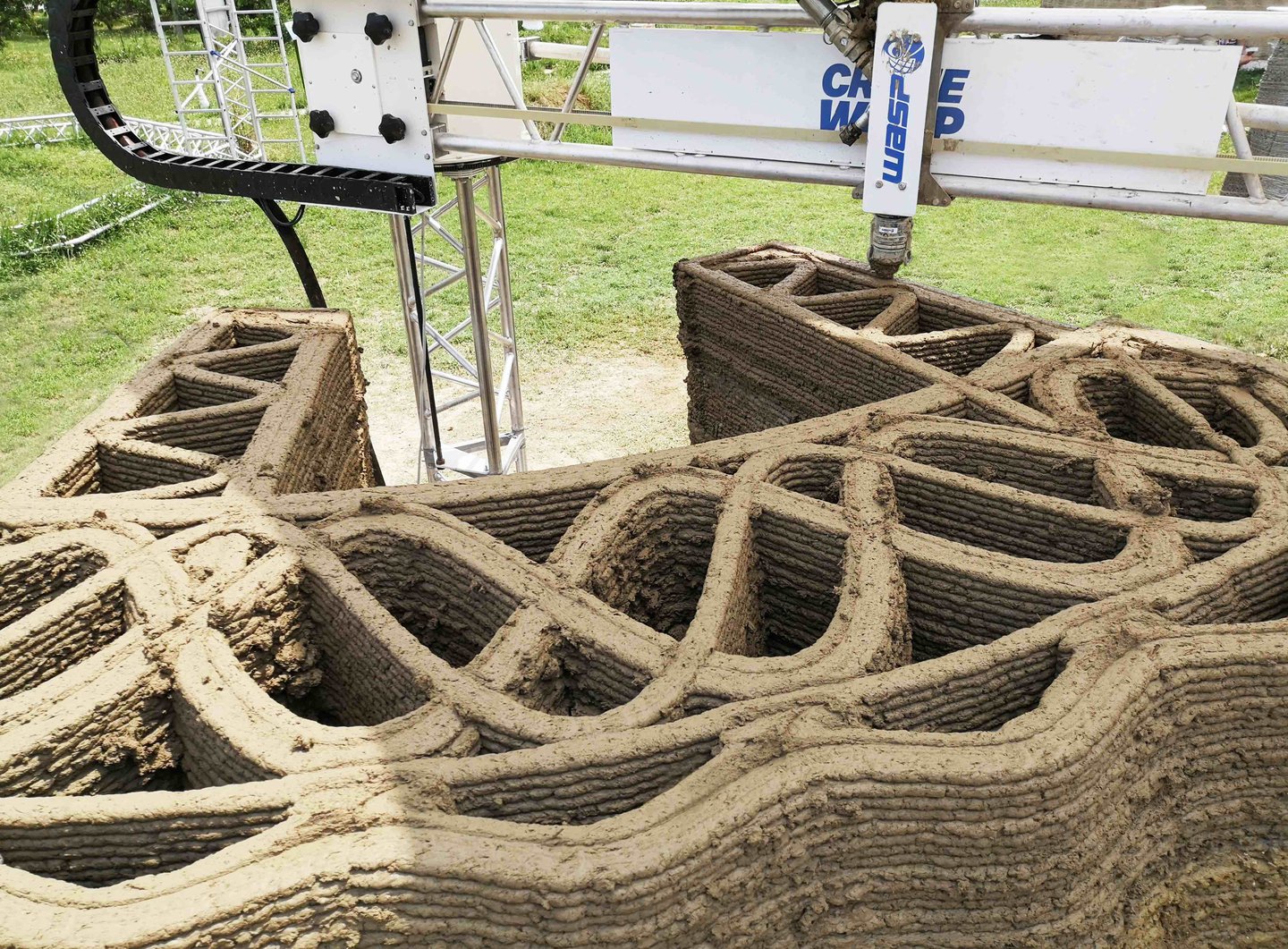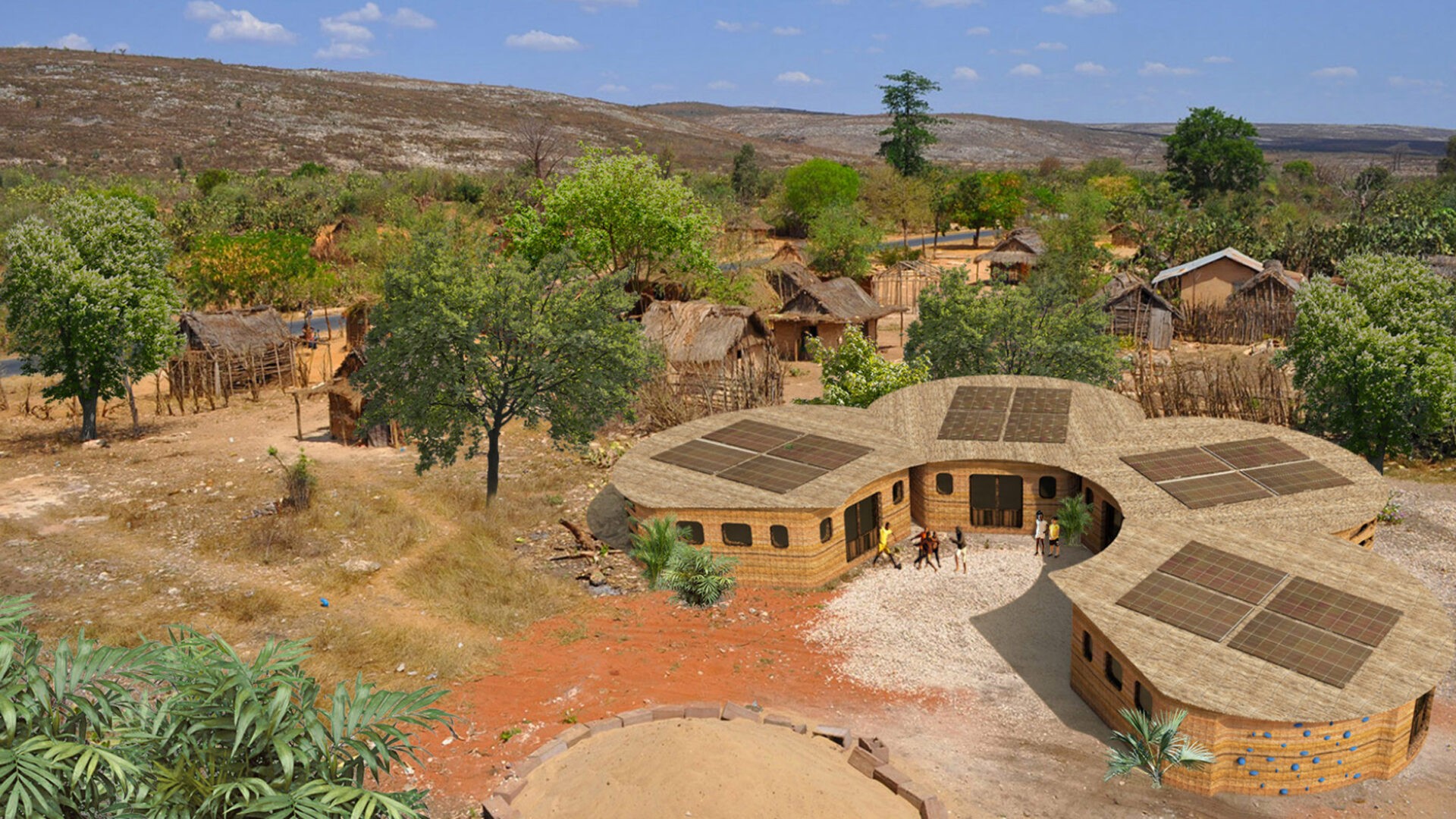Additive houses
Although we often hear about our own individual carbon footprint and of the airline business, a huge part of our collective emissions actually come from building construction, especially making concrete and the day to day energy use of buildings. 3D printing, or additive manufacturing, is not the solution, but perhaps a part of a mix of solutions. At the very least, it’s one evolving field of research that’s worth keeping track of, in part because certification of new materials and techniques takes time and represent a pretty high barrier to entry, so anything as new as 3D printing is bound to hit restrictions, or show a path forward for other innovative ideas.
Beyond that, some of the houses constructed with additive manufacturing just look cool and there are a growing number of them. Here are a few that drew my attention.
The first house to be 3D printed from raw earth
The design of the house is an organic, cave-like form that seems ancient and carved out of nature, visually contradicting the innovative technology behind it. It is typical of Cucinella’s practice which is focused on “humane” architecture, a crossover of low and high tech worlds. “The aesthetics of this house are the result of a technical and material effort,” Cucinella says in a statement, “it was not an aesthetic approach only. It is an honest form, a sincere form.”
Looks great, and a video plus quite a few images at the link above.

Studio Mortazavi to build “world’s first 3D-printed school” in Madagascar
Somewhat like solar, this might be a very useful technology for less central areas, instead of shipping all kinds of materials to the building spot, “just” ship the printer and use it locally with local materials.
Designed for non-profit organisation Thinking Huts, the solar-powered school will be made from pods that can serve different functions – as classrooms, science labs and dance studios, for example – and be expanded as needed.
Each pod will be constructed from a 3D-printed concrete aggregate, which Studio Mortazavi said can be made from recycled materials to reduce CO2 emissions.

These new 3D-printed homes in Austin are going for $450K
Noteworthy for this example: they are already on sale, some are already lived in, and the additive aspect is used in combination with more traditional construction materials.
Each of the houses took between five and seven days of printing time, and they’re between 1,000 and 2,000 square feet. The material used in the 3D-printing process is “a proprietary cementitious material called Lavacrete,” according to ICON, which it says is more durable than traditional construction materials. […]
So far, ICON has printed two dozen houses and structures across the US and Mexico, most of which are inhabited, including seven houses the company 3D-printed last year to house homeless people at Community First Village in Austin.
A 3D printed house is for sale in New York. Builders say it will cut housing construction costs
The most ordinary looking one of this list, but that’s likely a good thing for future adoption.
The company can set up its Autonomous Robotic Construction System at a build site in six to eight hours. It then lays concrete layer by layer, creating footing, the foundation of a house and the interior and exterior walls of the structure. […]
“The cost of construction is 50% cheaper than the cost of comparable newly-constructed homes in Riverhead, New York, and 10 times faster,” said Stephen King, the Zillow Premier agent who has the 3D house listing.
